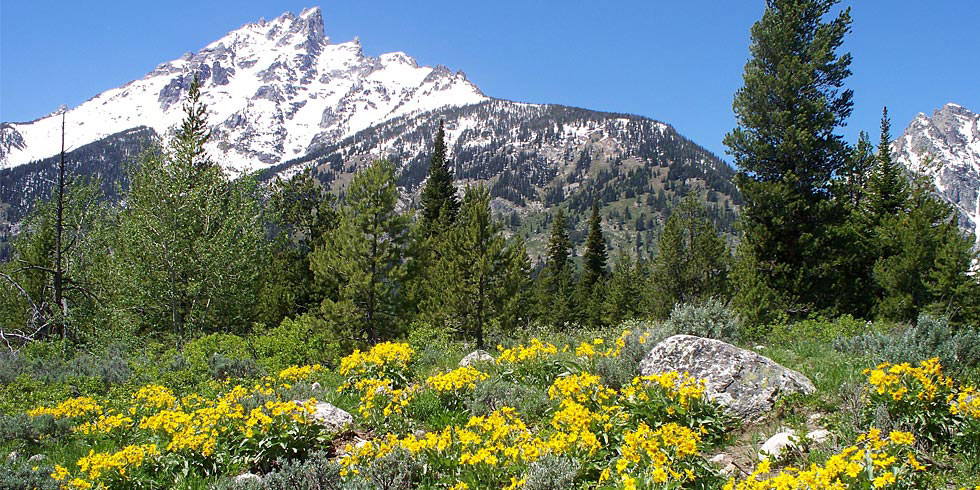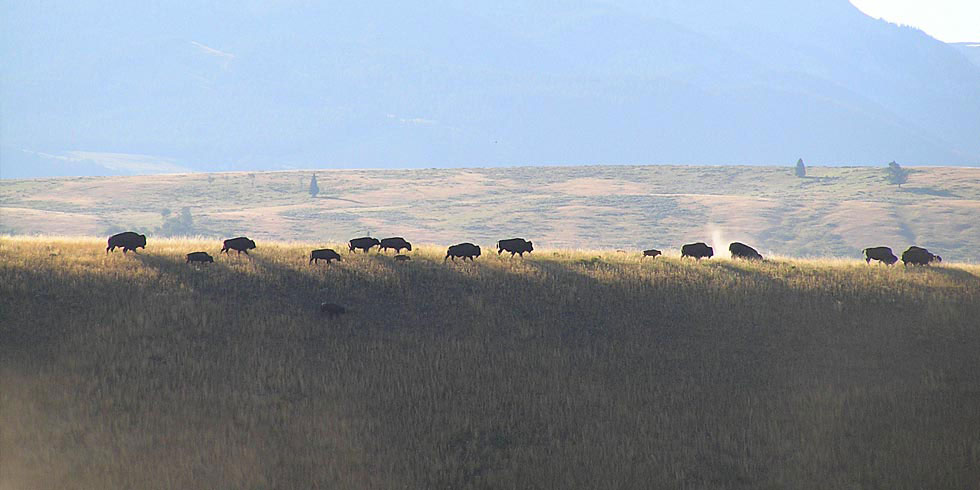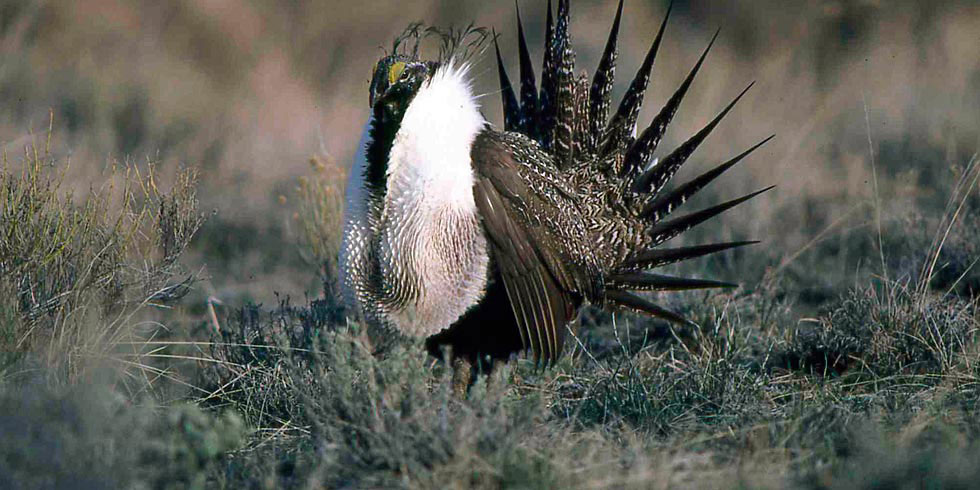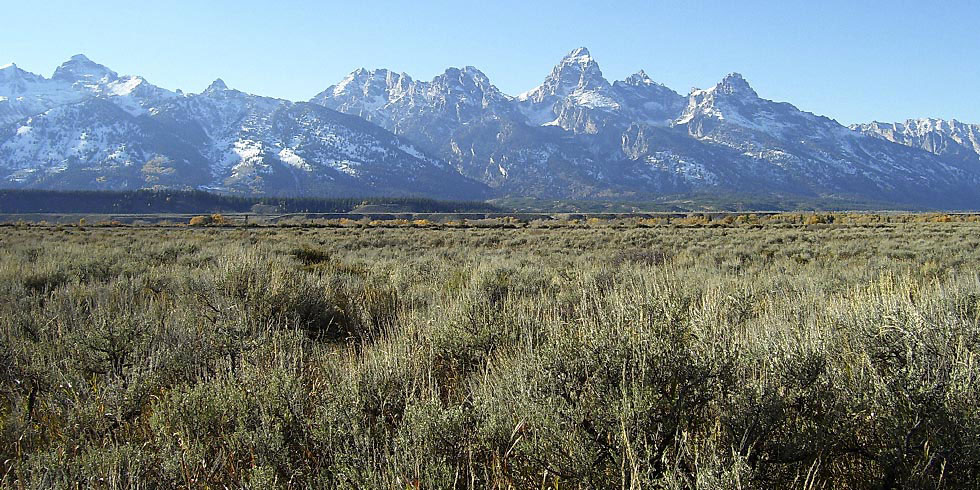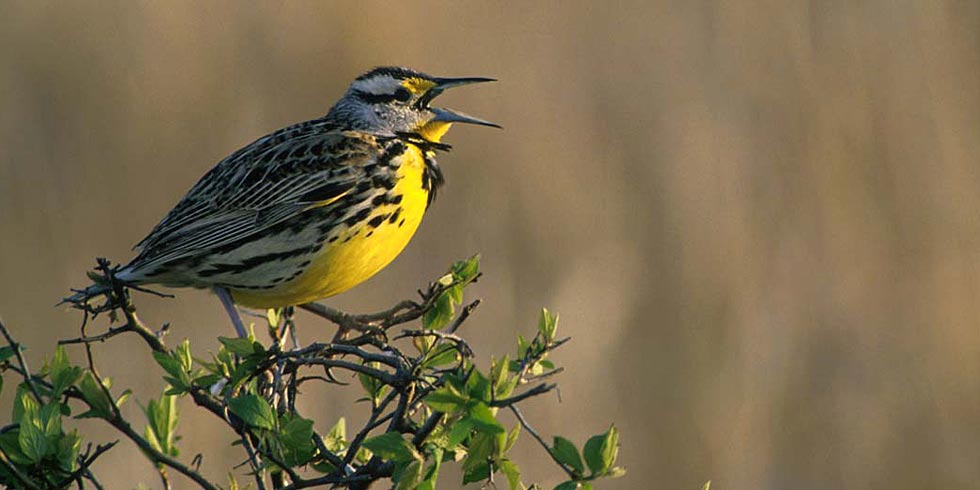Sagebrush Community
Overview
Sagebrush communities in Grand Teton National Park are surprisingly diverse. Sagebrush dominates the silver-green patchwork, but look carefully and you will discover many shrubs, grasses and wildflowers. Shallow soils, consisting of sand and cobbles that hold little moisture in summer characterize this community. Drought-tolerant plants survive here despite dry soil and intense sunlight.
Sagebrush Community
Plants
Over 1,000 species of vascular plants grow in Grand Teton National Park and the surrounding area. Soil conditions, availability of moisture, slope, aspect, and elevation all determine where plants grow. Plants that require similar conditions are often found growing in the same area. Animals depend on plants within a community for food and shelter. The plants in an area often determine the animals that occur in that area. These associations form various wild communities.
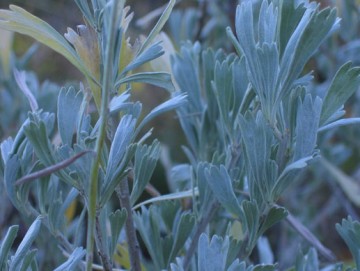 |
Big sagebrush
Artemisia tridentataBig sagebrush dominates the silver-green patchwork blanketing the valley floor. This shrub thrives because of its long taproot and its lateral roots near the surface that catch moisture from summer rains.
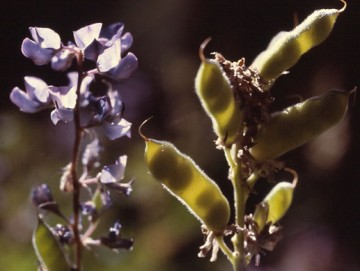 |
Silky lupine
Lupinus sericeusThis species favors dry sites and is common in the sagebrush community. Its blue flowers begin to bloom in late May or early June and by late June or early July produce a blue cast throughout the sagebrush.
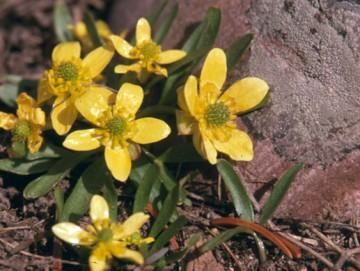 |
Sagebrush buttercup
Ranunculus glaberrimusThe sagebrush buttercup favors moist soil, growing in the sagebrush community only when snow first melts. One of the first wildflowers to bloom, it may appear as early as March on south facing slopes.
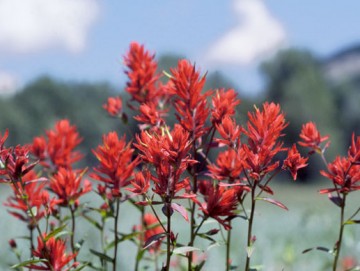 |
Indian Paintbrush
Castilleja linariifoliaA field filled with Indian paintbrush of various colors resembles a field of artist’s brushes dipped in colored paint. The Wyoming Indian paintbrush, the state flower of Wyoming, is generally red or scarlet.
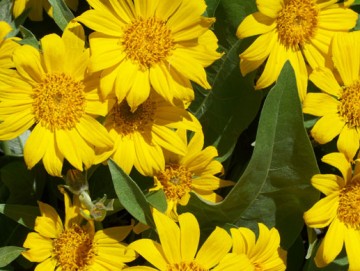 |
Arrowleaf Balsamroot
Balsamorhiza sagittataThe yellow flowers of arrowleaf balsamroot cover the valley floor in spring or early summer. The large arrowhead-shaped leaves give this species its common and scientific names. Sagittata means arrow-leaved.
Sagebrush Community
Mammals
With varied elevations and a variety of wild communities Grand Teton National Park is home to over 60 species of mammals. Large ungulates like moose, elk, mule deer, bison, and pronghorn are commonly seen along park roads. Although less common, large predatory mammals such as grizzly bears, black bears and coyotes are also regularly seen, while wolves and mountain lions are more elusive. Smaller mammals are abundant in the park, and species such as Uinta and golden-mantled ground squirrels, least chipmunks, red squirrels and pikas are commonly seen. Look for muskrats, beavers, or river otters in wetland communities. Bats frequently cruise above waterways for insects. Every wild community has its own assemblage of mammalian species.
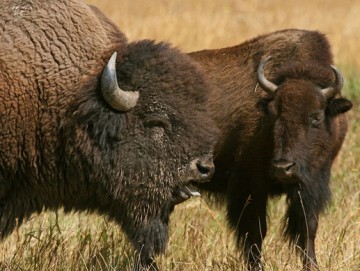 |
American bison
Bison bisonImagine when tens of millions of bison roamed the American Great Plains. Their shaggy dark brown forms covered the landscape. Though never abundant in Jackson Hole, they are common in the sagebrush community. (Photo credit: Dan Ng)
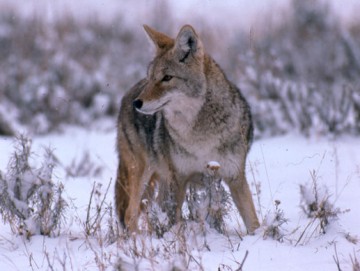 |
Coyote
Canis latransFor many visitors, the howling and yipping of distant coyotes, gives them a sense of the “Old West”. Coyotes have been a part of this landscape probably back to when glaciers first retreated from the valley.
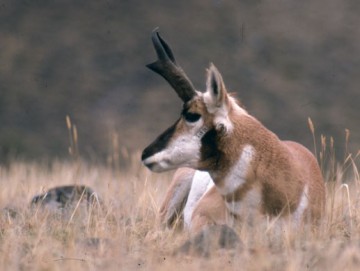 |
Pronghorn
Antilocapra americanaPronghorn, the fastest land mammal in North America, evolved on the vast grasslands that spread over the continent starting in the Miocene and culminating with the American Great Plains.
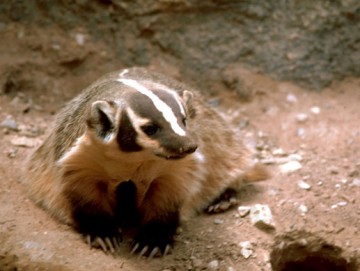 |
Badger
Taxidea taxusBadgers make a living by digging. They dig burrows where they give birth and spend the winter in semi-hibernation. They dig out the dens of Uinta ground squirrels or pocket gophers to prey on these rodents. (Photo credit: USFWS)
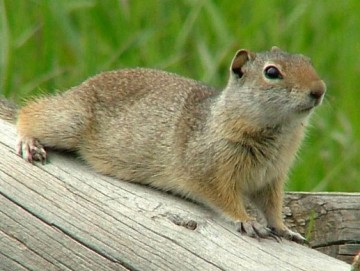 |
Uinta ground squirrel
Spermophilus armatusThe Uinta ground squirrel is one of the most common animals seen by visitors. It resembles a prairie dog, but smaller. This squirrel forms a major prey base that supports large populations of small predators.
Sagebrush Community
Birds
Birds in Grand Teton National Park are varied and abundant with over 300 species having been observed in the park. Birds are most abundant during the spring and fall migration, although over 60 species regularly breed in the park. For the avid bird watcher the park can be a good place to observe a number of Rocky Mountain and Western species including the trumpeter swan, cinnamon teal, Barrow’s goldeneye, Swainson’s hawk, greater sage grouse, dusky (blue) grouse, great gray owl, broad-tailed and calliope hummingbirds, violet-green swallow, Steller’s jay, black-billed magpie, Clark’s nutcracker, mountain chickadee, dipper, mountain bluebird, yellow-headed blackbird, western tanager and rosy finch. Other commonly seen birds in the park include common merganser, bald eagle, osprey, sandhill crane, common raven, yellow and yellow-rumped warbler.
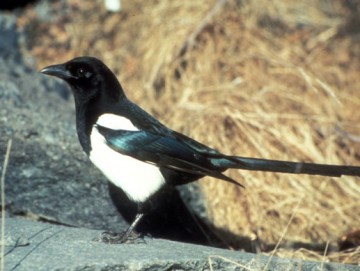 |
Black-billed magpie
Pica hudsoniaThe black-billed magpie is striking in black and white. The black feathers shimmer iridescent blue and green in the sun. Its maneuverability allows it to snatch a morsel from a grizzly bear guarded carcass. (Photo credit: USFWS)
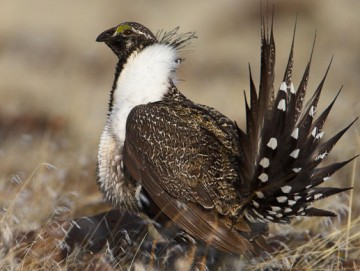 |
Greater sage grouse
Centrocercus urophasianusThe male greater sage grouse courtship display with the Teton Range as a backdrop is one of the great wildlife spectacles. Few visitors ever witness this event since it occurs at dawn in the chill of spring. (Photo credit: USFWS)
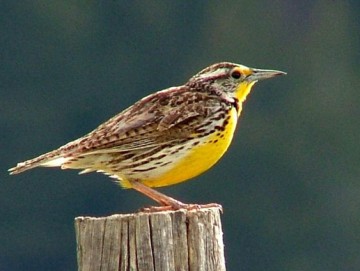 |
Western meadowlark
Sturnella neglectaAlthough the western meadowlark appears drab from behind, seeing this bird singing on a sagebrush in the morning sunlight can brighten anyone’s day. Its breast is bright yellow with a black V below its throat.
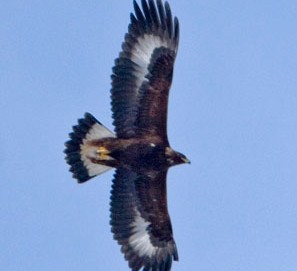 |
Golden eagle
Aquila chrysaetosVisitors frequently see bald eagles in the park, but see golden eagles less frequently. Look for golden eagles in the open spaces of the sagebrush community. With luck, you may spot this magnificent bird. (Photo credit: USFWS)
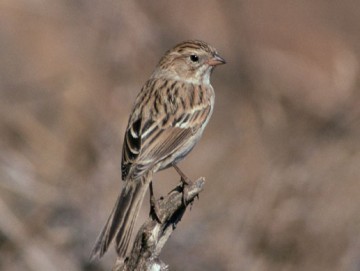 |
Brewer's sparrow
Spizella breweriThe Brewer’s sparrow is a common sparrow in the park in the sagebrush community. Protection for many species diminishes outside of the park. This sparrow has declined perhaps due to loss of sagebrush habitat. (Photo credit: USFWS)
Sagebrush Community
Invertebrates
Insects and other invertebrates are some of the most abundant and most important animal groups in the park. There are over 10,000 species of invertebrates in the park. These animals play important roles in wild communities - insects function as pollinators of the park’s abundant wildflowers, while insects and other invertebrates, are food for mammals and birds from the largest grizzly bear to the smallest warbler. Invertebrates act as critical decomposers and nutrient-recyclers and cause important plant diseases.
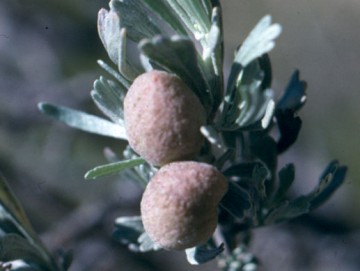 |
Sagebrush gall midge
Asplondylia artemisiaeSagebrush gall midges are rarely seen small parasitic flies. Many species may induces sagebrush to produce an abnormal leaf growth which provides a microenvironment for larvae or other parasite to grow.
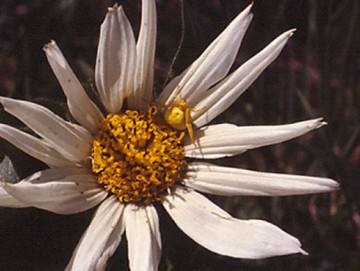 |
Goldenrod crab spider
Misumena vatiaThe goldenrod crab spider does not spin a web – it is an ambush hunter. It sits on a flower petal, camouflaged by matching the color of the flower, and waits for a pollinating insect such as a bee or butterfly.
Discover Grand Teton is funded by the Grand Teton National Park Foundation in partnership with the National Park Service.
gtnpf.org
gtnpf.org
